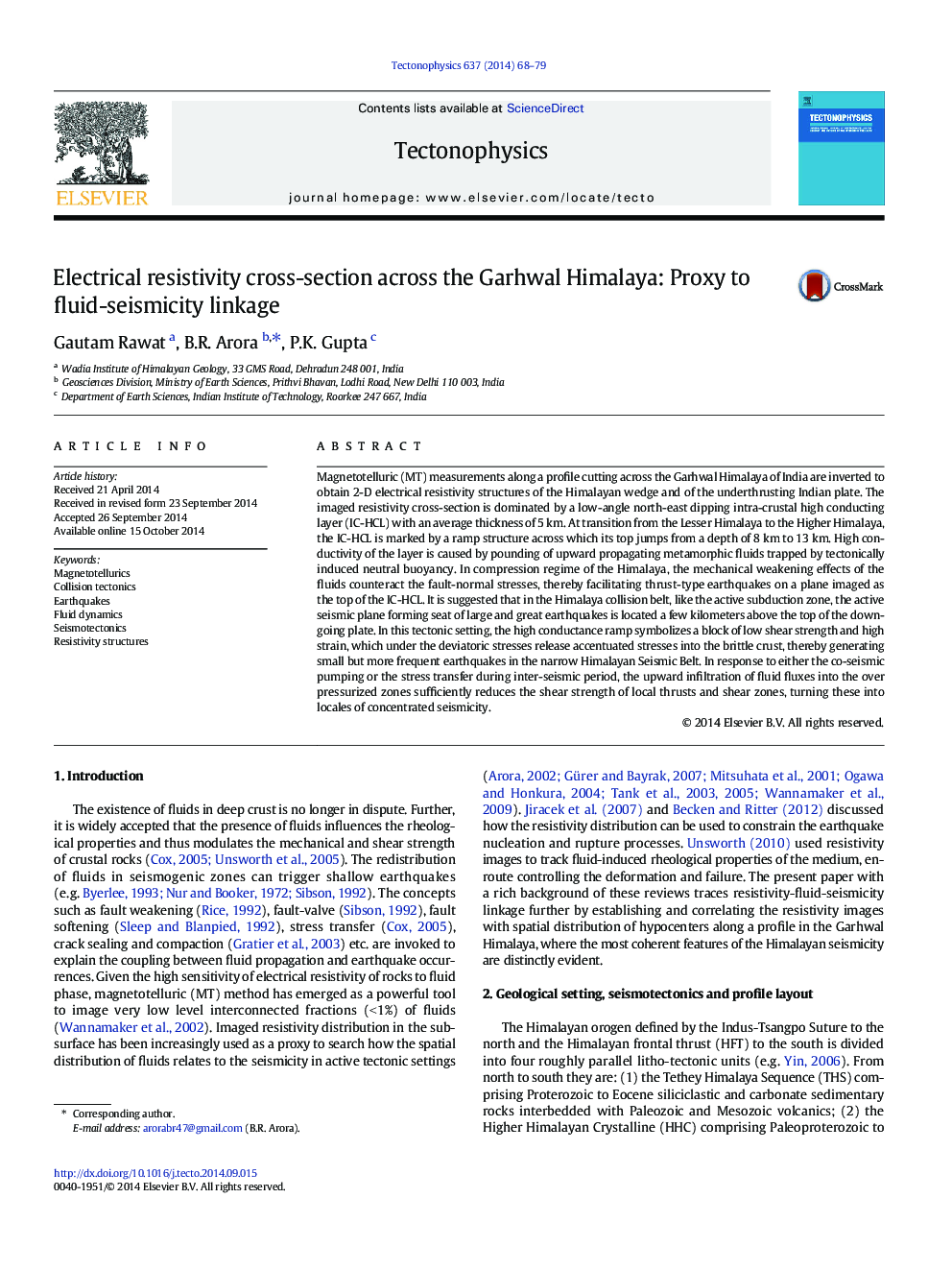| کد مقاله | کد نشریه | سال انتشار | مقاله انگلیسی | نسخه تمام متن |
|---|---|---|---|---|
| 6433754 | 1636754 | 2014 | 12 صفحه PDF | دانلود رایگان |

- Interrelation between electrical resistivity, fluid and seismicity in collision zone
- Tracking fluid-seismicity linkage through electrical resistivity distribution
- Electrical resistivity images proxy to role of fluids in seismogenesis
Magnetotelluric (MT) measurements along a profile cutting across the Garhwal Himalaya of India are inverted to obtain 2-D electrical resistivity structures of the Himalayan wedge and of the underthrusting Indian plate. The imaged resistivity cross-section is dominated by a low-angle north-east dipping intra-crustal high conducting layer (IC-HCL) with an average thickness of 5Â km. At transition from the Lesser Himalaya to the Higher Himalaya, the IC-HCL is marked by a ramp structure across which its top jumps from a depth of 8Â km to 13Â km. High conductivity of the layer is caused by pounding of upward propagating metamorphic fluids trapped by tectonically induced neutral buoyancy. In compression regime of the Himalaya, the mechanical weakening effects of the fluids counteract the fault-normal stresses, thereby facilitating thrust-type earthquakes on a plane imaged as the top of the IC-HCL. It is suggested that in the Himalaya collision belt, like the active subduction zone, the active seismic plane forming seat of large and great earthquakes is located a few kilometers above the top of the down-going plate. In this tectonic setting, the high conductance ramp symbolizes a block of low shear strength and high strain, which under the deviatoric stresses release accentuated stresses into the brittle crust, thereby generating small but more frequent earthquakes in the narrow Himalayan Seismic Belt. In response to either the co-seismic pumping or the stress transfer during inter-seismic period, the upward infiltration of fluid fluxes into the over pressurized zones sufficiently reduces the shear strength of local thrusts and shear zones, turning these into locales of concentrated seismicity.
Journal: Tectonophysics - Volume 637, 10 December 2014, Pages 68-79